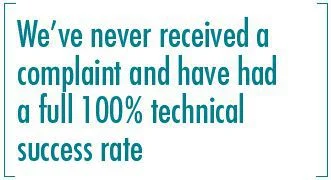HealthManagement, IQ_2012_06_venus
Minimally invasive treatments for varicose veins are offering patients more choice than ever, and even where they are not offered by public health insurers, patients are voting with their wallets and seeking out private treatment.
Dr. Kieran McBride runs the Scottish Vein Centre, a private clinic in Edinburgh that offers varicose vein sufferers the gentle options they are looking for. He tells us why the procedures are so popular, and why, having trained as both a surgeon and an interventional radiologist, he favours the minimally invasive approach.
The Public Purse
The term ‘endovenous ablation’ sounds complicated, but it’s basically burning the vein from the inside. Data has been building up over the last 10 years, and there’s a lot of indisputable evidence now. Nonetheless, there is a reluctance in Europe to provide it on the public purse.
The US Experience
In the US, ablation has now become the accepted standard for patients, surgeons and insurance companies. Endovenous laser is the proven superior treatment – there’s plenty of data to support it.
In 2005, the American private insurance companies decided to pay for it, as it was the cheaper option. So literally overnight, surgeons were realising that a less invasive, non-surgical outpatient procedure meant better re funds. Now, only about 10-15% of veins are being operated on in America. It’s the other way around in the UK.
The Public Mood
In Europe, people who are experiencing heavy, uncomfortable legs, or who are unhappy with the appearance of their legs are often reluctant to opt for surgery. But their veins have a huge impact on their quality of life, and when they know interventional radiology (IR) is an option, many are happy to pay to have their knarled and painful veins rectified.
The Limitations of Surgery
Surgeons generally cut at the groin and tie off the incompetent vein, then pull it out: but stripping can be very inefficient. Little bits of vein come out, but not the whole vein. Even if the procedure is completely successful, patients are still left with scars.
With certain veins, such as the short saphenous (the veins at the back of the knee), there’s a high recurrence rate and a high complication rate with surgery and these veins especially do better with the less invasive methods.
Another drawback to surgery is neovascularisation: 25 of my patients have had a recurrence from surgery called a varix. That’s when a large number of small veins regrow from the cut vein, and they’re difficult to deal with surgically. So I introduce a catheter, followed by a fibre optic. Before I turn on the laser, I inject a foam sclerosant, which fills all of the varices that are all bunched together. I’ve had really good results, even at 4-year follow-up.
Neovascularisation is avoided with laser or radio frequency where the vein remains closed. So you actually inhibit new growth, you’re preventing that recurrence.
Patient Choice
Missed Diagnoses
The Scottish Vein Centre
Satisfied Clients





